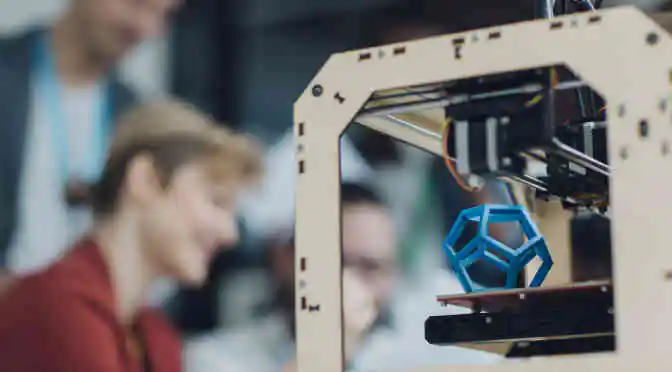3D printing or Additive Layer Manufacturing (ALM), is at the cutting edge of many surprisingly diverse industry verticals, from food, to healthcare, to retail, and now commercial aerospace. Commercial aerospace 3D printing owes its rapidly incrementing popularity to the airline industry’s quest for cost-effective innovation, and the corresponding growth in 3D printing technology.
 This technology has been developed and advanced to offer robust versatility, across design and manufacturing, in sectors such as automotive and aerospace. 3D printing technology is proving to be a real game-changer for commercial aircraft design and production. From cabin interiors to complex engine parts, aerospace companies are turning to 3D printing to manufacture best performing and reliable components for their commercial aircrafts.
This technology has been developed and advanced to offer robust versatility, across design and manufacturing, in sectors such as automotive and aerospace. 3D printing technology is proving to be a real game-changer for commercial aircraft design and production. From cabin interiors to complex engine parts, aerospace companies are turning to 3D printing to manufacture best performing and reliable components for their commercial aircrafts.
How is aerospace 3D printing impacting the commercial airline industry?
The concept of 3D printing is nothing new. However, recent advancements and innovations have pushed the boundaries of this technology so much that 3D printing appears vastly more complicated than before. Rapid growth in the sales of aerospace bound 3D printers is likely the beginning of a surge in the application of additive layer manufacturing in the aerospace industry.
Harbinger of performance improvements and cost optimization
The aerospace business continues to experience staggering growth, driven by four significant factors: cost, load, weight and environmental impact. Herein, 3D printing is emphasized as a revolutionary technology that impacts all four of the aforementioned aspects of the commercial aerospace business. ALM has significant potential to emerge from a niche position to becoming a game changer in the sphere of aircraft manufacturing by increasing product performance, reducing production and inventory costs and improving supply chain flexibility.
Complex designs, greater durability, easy implementation
3D printing or additive manufacturing for aerospace has moved well beyond prototyping. Today, many aerospace companies use it to advance the functionality of existing components and construct non-structural parts for general and commercial aviation aircrafts. Aerospace manufacturers are now able to produce components and products with more complex designs, lower weight classes and provide better durability than ever before.
Eliminating manufacturing constraints
The commercial aerospace 3D printing technique eliminates several traditional manufacturing constraints. Form tools, molds or costly dyes used in conventional manufacturing are no longer needed. Complex designs do not require any extra cost to produce as laser technology can construct complex shapes just as quickly as simple ones. It helps in reducing manufacturing time from months to days and provides the design freedom to minimize weight, without losing any inherent strength.
Virtual warehouse management
One of the important benefits that 3D printing offers to the aerospace industry is the capability to improve warehouse management. Unlike traditional manufacturing tools, 3D printers allow companies to manufacture critical parts faster and on a make-to-order basis. Plausibly, this cost-effective method for warehousing prevents the obsolescence of spare parts and eliminates physical inventories. Beside the decrease in wasted expense, commercial aerospace 3D printing also allows manufacturers to reduce lead time in the delivery of components and save on transportation and other logistical costs.
Popular 3D printing techniques used for commercial aerospace deliverables
Commercial aerospace companies employ a number of 3D-printing techniques, including fused deposition modeling used by home 3D printers that creates plastic products by building up layers from a liquefied material. Aside from this, manufacturers have a few other options too, such as electron-beam and laser manufacturing, which manufacture metal parts by blending particles of metal powder in layers.
3D printing offers cutting-edge solutions to manufacturing obstacles that were difficult to solve before. Moreover, as the technology continues to grow and become more accessible, we can expect more comprehensive adoption and groundbreaking applications that will undoubtedly transform the future of the commercial aerospace 3D printing industry.



